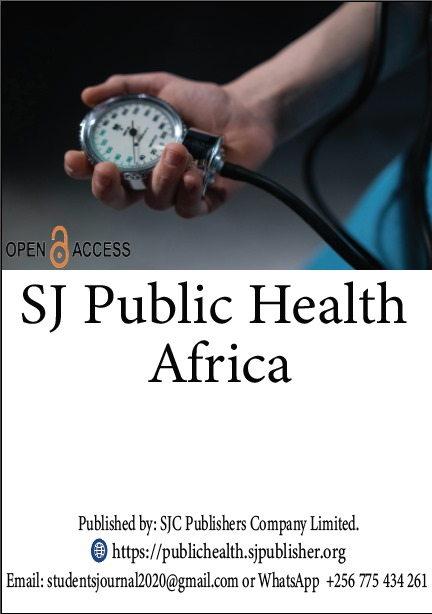Factors influencing self-medication among residents of Nakisunga village, Mukono district. A cross-sectional study.
DOI:
https://doi.org/10.51168/rxrnt841Keywords:
Self-medication, Nakisunga village, Mukono District, UgandaAbstract
Background:
The main purpose of this study was to assess the prevalence and factors influencing self-medication among residents of Nakisunga village, Mukono District, Uganda.
Methods:
A community-based cross-sectional study was conducted among 100 adult household members in Mukono District, from April 5 to May 5, 2017, and the respondents were interviewed during the study using the systematic random sampling method. A pre-tested, structured questionnaire was used for data collection using an interviewer-administered technique. Epi-Info version and SPSS version 22 were utilized for data entry and analysis, respectively.
Results:
Out of 100 respondents, 77% had ever done self-medication, and only 33% of respondents had not. Among these, women (52) used self-medication more than men (40), while 8 were not sure. Prevalence was also higher among people with low education levels (68) than those with a higher education level (32).
Among the factors associated with self-medication, 60% of the health workers did not have enough drugs, while 40% had drugs. Most of the respondents (54) stated that the health facility was far from their homes. The majority (76) also agreed that the government should include policies and measures that prevent self-medication, and the minority (24 ) disagreed.
Conclusion:
There is a high prevalence of self–medication among people, mostly among women than men. This was because of low education, the far distance of health facilities, and the low staffing of health facilities.
Recommendation:
The government should recruit more health workers at all levels of health facilities to prevent work overload and long waiting hours for patients.
Community members should be encouraged to start community income-generating activities to boost their socio-economic status, thus being able to afford new drugs every time they become ill.
References
Baye a, sada o. Self-medication practice in community pharmacies: the case of Dessie Town, northeast Ethiopia. Adv pharmacoepidemiology drug safety. 2018;7(1):1–3.
Birungi, s. (2017). Self-medication among patients attending Kampala International University Teaching Hospital Outpatient Department ishaka-bushenyi district, western Uganda.
Kumar v, Mangal A, Yadav g, raut d, Singh s. Prevalence and pattern of self-medication practices in an urban area of Delhi, India. Med j dy patil univ. 2015;8(1):16.
Montastruc j-l, bondon-guitton e, abadie d, et al. Pharmacovigilance, risks, and adverse effects of self-medication. Therapie 2016; 71:257–62
World health organization (who, 2017). Causes of self-medication practices. Retrieved from www.who.org.
Akande-Sholabi, W., & Akinyemi, O. O. (2023). Self-medication with over-the-counter drugs among consumers: A cross-sectional survey in a Southwestern State in Nigeria. BMJ Open, 13(5), e072059. https://doi.org/10.1136/bmjopen-2023-072059
Mathias, E. G., D’souza, A., & Prabhu, S. (2020). Self-Medication Practices among the Adolescent Population of South Karnataka, India. Journal of Environmental and Public Health, 2020, e9021819. https://doi.org/10.1155/2020/9021819
Mohammed, S. A., Tsega, G., & Hailu, A. D. (2021). Self-Medication Practice and Associated Factors Among Health Care Professionals at Debre Markos Comprehensive Specialized Hospital, Northwest Ethiopia. Drug, Healthcare and Patient Safety, 13, 19–28. https://doi.org/10.2147/DHPS.S290662
Downloads
Published
Issue
Section
License
Copyright (c) 2025 SHARON BIGARURAHO (Author)

This work is licensed under a Creative Commons Attribution-NonCommercial-NoDerivatives 4.0 International License.
The journal publishes under the Attribution-Noncommercial-NoDerivatives 4.0 international (CCBY-NC-ND 4.0) license which allows you to Share, Copy and redistribute the materials in any medium or format. The licensor cannot revoke these freedoms as long as you follow the license terms;
- Attribution: You must give appropriate credit, provide a link to the license, and indicate if changes were made. You may do so in any reasonable manner, but not in any way that suggests the licensor endorses you or your use.
- Non-commercial: You may not use the material for commercial purposes. Commercial use is one primarily intended for commercial advantage or monetary compensation.
- No Derivatives: if you remix, transform, or build upon the material, you may not distribute the modified material.
- No additional restrictions: You may not apply legal terms or technological measures that legally restrict others from doing anything the license permits.




